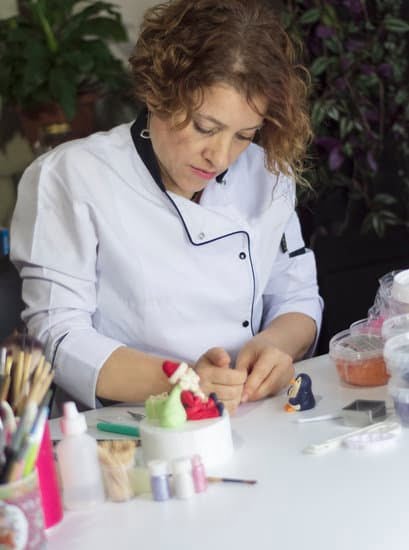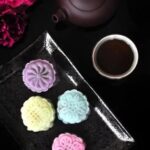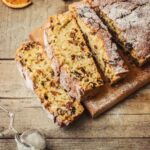As Easter approaches, many people are eagerly preparing to celebrate the holiday with delicious and beautifully decorated cakes. The tradition of decorating Easter cakes has a long history and is deeply rooted in the customs and festivities surrounding this special time of year. From traditional Simnel cakes to modern variations, there are countless ways to express creativity and joy through the art of Easter cake decorating.
The history of Easter cakes is filled with fascinating origins and traditions that have been passed down through generations. Understanding the significance of these sweet treats adds an extra layer of meaning to the holiday celebrations. Whether it’s learning about the symbolism behind certain decorations or exploring the evolution of cake designs over time, delving into the history of Easter cakes provides a deeper appreciation for this beloved tradition.
In this article, we will explore the various types of Easter cakes, essential ingredients for decorating, different decorating techniques, step-by-step guides for creating beautiful designs, creative ideas and themes for decorating, as well as tips for displaying and serving these delectable creations. Whether you’re a baking enthusiast or simply looking for inspiration for your Easter celebration, this comprehensive guide to Easter cake decorating has something for everyone.
So get ready to unleash your creativity and embrace the art of Easter cake decoration.
History of Easter Cakes
The history of Easter cakes is rich and deeply intertwined with the traditions of this important holiday. From ancient customs to modern interpretations, the story of Easter cakes is a fascinating journey that reflects the cultural diversity and religious significance of Easter.
Origins of Easter Cakes
The tradition of baking special cakes for Easter dates back centuries and has its roots in religious and cultural practices. In many cultures, sweet breads and cakes were baked to celebrate the end of Lent, marking the return to indulgence after a period of fasting. These early Easter cakes were often enriched with ingredients such as eggs, milk, and butter, which were restricted during the Lenten period.
Symbolism and Traditions
Easter cakes are often imbued with symbolic meaning that reflects the religious significance of the holiday. For example, the Simnel cake, a traditional fruitcake topped with marzipan balls representing Jesus’ disciples, symbolizes spiritual unity and resurrection. Similarly, in Eastern European traditions, elaborate decorated breads known as “paska” or “kulich” are baked for Easter and adorned with symbols representing new life and rebirth.
Evolution of Easter Cakes
As time has passed, the tradition of baking Easter cakes has evolved to encompass a wide variety of recipes and styles. Different regions have their own unique takes on Easter cake, incorporating local flavors and ingredients into their creations.
Today, the art of decorating Easter cakes has also become a popular pastime for families and individuals looking to express their creativity during this festive season. Whether it’s through intricate icing designs or elaborate fondant decorations, Easter cake decorating has become an art form that adds an extra layer of joy to this celebratory holiday.
The history of Easter cakes is not only a testament to the enduring traditions surrounding this holiday but also a reflection of the creativity and symbolism that infuses these delectable treats. As we continue to honor these age-old customs while embracing new interpretations, the history of Easter cakes remains an integral part of our cultural tapestry.
Types of Easter Cakes
The celebration of Easter is a time for families and friends to come together and enjoy delicious meals, including a variety of Easter cakes decorated to reflect the joyous occasion. Throughout history, different cultures have developed their own unique types of Easter cakes, each with its own special meaning and significance.
One of the most traditional Easter cakes is the Simnel cake, which has its origins in British culinary traditions. This fruitcake is typically adorned with 11 marzipan balls on top, representing the true disciples of Jesus Christ, minus Judas Iscariot. Another classic Easter cake is the Italian panettone, a rich sweet bread filled with candied fruits and raisins, often enjoyed during the Easter season.
As times change and culinary creativity grows, modern variations of Easter cakes have emerged. From decadent chocolate cakes decorated with colorful pastel frosting to light and airy sponge cakes filled with fresh berries, there are countless options for those looking to add a contemporary twist to their Easter dessert spread.
No matter the type of Easter cake chosen for celebration, what remains constant is the opportunity for creativity in decorating these delectable treats. Whether it be intricate piping work or meticulously placed fondant decorations, the possibilities are endless when it comes to adorning Easter cakes with festive designs that capture the spirit of the holiday.
Essential Ingredients for Easter Cake Decorating
When it comes to decorating Easter cakes, there are a few essential ingredients that every baker should have on hand. From classic decorations to more modern additions, the key to creating a stunning Easter cake lies in the selection of high-quality ingredients.
One of the most important elements is food coloring, which can be used to create vibrant springtime hues for frosting and fondant. Additionally, edible glitter and sprinkles can add a touch of sparkle and fun to any Easter cake.
Another essential ingredient for Easter cake decorating is royal icing, which can be used for intricate designs and piped decorations. It’s important to have a good piping set with different tips for creating various patterns and textures. Fondant is also popular for covering cakes and creating detailed decorations such as flowers, bunnies, or Easter eggs. To add an extra layer of flavor and texture, consider incorporating nuts, dried fruit, or marzipan into your cake design.
In addition to these essentials, don’t forget about simple yet elegant decorations such as fresh flowers or herbs. Whether you’re decorating a traditional simnel cake or a modern carrot cake, these natural embellishments can add a beautiful finishing touch to your Easter creation.
| Essential Ingredient | Function |
|---|---|
| Food Coloring | Creates vibrant colors for frosting and fondant |
| Edible Glitter and Sprinkles | Adds sparkle and fun |
| Royal Icing | Used for intricate designs and piped decorations |
| Fondant | Covers cakes and creates detailed decorations |
Easter Cake Decorating Techniques
Easter cake decorating is a cherished tradition for many families, with the finished masterpiece often taking center stage at the holiday table. From delicate piping to intricate fondant designs, there are countless techniques that can be used to create stunning Easter cakes. Whether you’re a novice baker or an experienced pastry chef, mastering these techniques can take your Easter desserts to the next level.
One popular technique for decorating Easter cakes is piping. Using a piping bag and various tips, bakers can create intricate designs and patterns on their cakes. From simple borders to elaborate flowers and shapes, the possibilities are endless with piping. Some common designs for Easter cakes include delicate pastel-colored flowers and cute little bunnies.
Another popular technique for decorating Easter cakes is working with fondant. Fondant is a pliable icing that can be rolled out and draped over the cake to create a smooth, flawless finish. It can also be shaped and molded into 3D decorations such as Easter eggs, chicks, and even miniature baskets. Fondant allows for endless creativity and can add a professional touch to your Easter dessert.
In addition to piping and fondant work, there are many other techniques that can be used to decorate Easter cakes. These include using edible flowers, creating sugar or chocolate decorations, or even simply dusting the cake with powdered sugar for a simple yet elegant finish.
Get ready because there’s nothing like impressing family and friends with your homemade easter cakes decorated using some of these beautiful techniques.
Step-by-Step Guide to Decorating an Easter Cake
Decorating an Easter cake can be a fun and creative way to add a festive touch to your holiday celebrations. Whether you’re a novice or an experienced baker, there are various techniques and designs you can use to make your Easter cake the centerpiece of your dessert table.
Gather Your Supplies
Before you start decorating your Easter cake, it’s essential to gather all the necessary supplies. This includes your baked and cooled cake, frosting or icing, food coloring (if desired), piping bags and tips, fondant (if using), edible decorations such as sprinkles or edible glitter, and any other decorative elements you plan to use.
Prepare the Cake
Once you have all your supplies ready, it’s time to prepare the cake for decorating. If necessary, level the top of the cake using a serrated knife to create a flat surface. You can also brush away any loose crumbs with a pastry brush before applying a crumb coat of frosting to seal in any crumbs and provide a smooth base for decorating.
Decorate Your Cake
Now comes the fun part – decorating your Easter cake. You can use a variety of techniques such as piping buttercream flowers or swirls, rolling out fondant to create shapes or designs, or simply spreading on colorful icing with a spatula. Get creative with pastel colors and spring-themed designs like flowers, bunnies, or eggs to capture the spirit of Easter.
By following these steps and letting your creativity shine through, you’ll be able to decorate an Easter cake that not only looks beautiful but also tastes delicious, adding a special touch to your holiday festivities. Whether you choose to go for a classic look or try out more modern and whimsical designs, the most important thing is to have fun and enjoy the process of creating something unique for this special occasion.
Creative Easter Cake Decorating Ideas and Themes
Easter is a time for creativity and celebration, and what better way to showcase your creativity than with beautifully decorated Easter cakes? Whether you’re a seasoned baker or just starting out, there are endless ideas and themes to explore when it comes to decorating Easter cakes. Here are some creative Easter cake decorating ideas and themes to inspire you:
Springtime Delights
Unleash the vibrant colors of spring by incorporating floral designs, pastel shades, and adorable critters into your Easter cake decorations. Consider using edible flowers, such as daisies or pansies, to add a touch of whimsy to your cake. You can also create a garden scene with fondant flowers, butterflies, and ladybugs for a delightful springtime theme.
Easter Eggstravaganza
Easter eggs are a staple element of Easter celebrations, so why not incorporate them into your cake decorations? You can use pastel-colored fondant or icing to create intricate egg designs on your cake, or even add edible gold or silver luster dust for a touch of elegance. To take it up a notch, consider adorning your cake with sugar paste or chocolate eggs for an extra festive touch.
Adorable Bunny Bonanza
Bunnies are synonymous with Easter festivities, making them the perfect inspiration for your cake decorations. Whether it’s a cute bunny face on top of the cake or an entire bunny-shaped cake, there are endless ways to bring these adorable creatures to life. You can use marshmallow fondant to sculpt 3D bunnies or opt for simpler bunny silhouettes made from piped icing.
These creative Easter cake decorating ideas and themes are just the tip of the iceberg when it comes to showcasing your artistic talents during this festive season. Let your imagination run wild and have fun experimenting with different designs, colors, and techniques to create a show-stopping Easter centerpiece that will delight everyone at the table.
Tips for Displaying and Serving Decorated Easter Cakes
Easter is a time for celebration and indulgence, and what better way to satisfy your sweet tooth than with beautifully decorated Easter cakes? Once you’ve put in the effort to create a stunning Easter cake, it’s important to display and serve it with just as much care and attention to detail. Here are some tips to ensure that your decorated Easter cake is the centerpiece of your holiday spread.
Firstly, consider the presentation of your Easter cake. Opt for a cake stand or platter that complements the theme or colors of your decorated cake. This will not only elevate the visual appeal of the dessert but also make it easier for guests to admire and access it. Additionally, consider adding fresh flowers, edible decorations, or themed figurines around the base of the cake for an extra touch of elegance.
When it comes to serving your decorated Easter cake, ensure that you have the appropriate utensils on hand. Use a sharp serrated knife for clean slices and have a server or spatula ready for transferring each piece onto individual plates. If your cake has delicate decorations such as sugar flowers or intricate piping, handle each slice with care to preserve its beauty.
Lastly, don’t forget about storage. If you’re preparing your Easter cake ahead of time, make sure to keep it in a cool, dry place away from direct sunlight. If refrigeration is necessary due to perishable frosting or filling, allow the cake to come to room temperature before serving to ensure optimal taste and texture.
By following these tips for displaying and serving decorated Easter cakes, you can ensure that your masterpiece receives the attention it deserves and becomes a memorable part of your holiday festivities. Happy decorating.
Conclusion
In conclusion, Easter cake decorating is a cherished tradition that adds a beautiful and delicious element to the celebration of this special holiday. From the rich history of Easter cakes to the variety of techniques and themes available today, there is no shortage of creativity when it comes to adorning these sweet treats.
Whether you prefer a traditional Simnel cake or a modern twist on the classic recipe, the essential ingredients and decorating techniques outlined in this article provide the foundation for creating stunning Easter confections.
By embracing the art of Easter cake decorating, we not only honor the customs and traditions that have been passed down through generations, but we also have the opportunity to showcase our own creativity and individuality. Whether it’s piping delicate designs with royal icing or sculpting intricate figurines out of fondant, there are endless ways to make each Easter cake a unique masterpiece.
The step-by-step guide provided offers a helpful resource for those looking to hone their skills, while the creative decorating ideas and themes spark inspiration for those seeking new and innovative concepts for their Easter creations.
As we approach this joyful holiday, let us not only savor the delicious flavors of our Easter cakes decorated with love and care but also appreciate the time-honored artistry that goes into making them. Whether displayed as a centerpiece or shared among family and friends, decorated Easter cakes are not just desserts – they are symbols of joy, renewal, and tradition.
So let us embrace the art of Easter cake decorating as an integral part of our celebrations, bringing beauty and delight to our gatherings year after year.
Frequently Asked Questions
How to Decorate a Cake for Easter?
Decorating a cake for Easter can be a fun and creative process. Some popular ideas include using pastel colors, edible flowers, and Easter-themed sugar decorations. You can also incorporate bunnies, chicks, and Easter eggs to give your cake a festive touch.
What Cake Is Traditionally Eaten at Easter?
One of the most traditional cakes eaten at Easter is the simnel cake. This fruitcake is often topped with marzipan and decorated with 11 marzipan balls to represent the 11 apostles (minus Judas). It’s a rich and dense cake that has been associated with Easter for centuries.
How to Decorate an Easter Basket Cake?
Decorating an Easter basket cake is a great way to celebrate the holiday. Start by baking a rectangular cake and then use shredded coconut dyed green for grass. Add edible candy eggs, chocolate bunnies, and marshmallow chicks to create a playful Easter basket effect on top of the cake.

Welcome to our cake decorating blog! My name is Destiny Flores, and I am the proud owner of a cake decorating business named Cake Karma. Our mission is to provide delicious, beautiful cakes for all occasions. We specialize in creating custom cakes that are tailored specifically to each customer’s individual needs and tastes.





